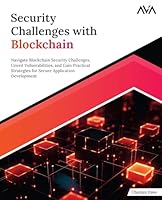
Enterprise IPv6 for Enterprise Networks
- Length: 96 pages
- Edition: 1
- Language: English
- Publisher: CreateSpace Independent Publishing Platform
- Publication Date: 2015-11-10
- ISBN-10: 1519223781
- ISBN-13: 9781519223784
The traditional enterprise network for IPv6 transition mechanisms has been IPv4 address reduction, which is speeding up due to international development of Internet connection particularly in Asia & EU. Prior to 2007, IPv6 address allowance guidelines were totally ordered and permitted only enterprises to acquire a network address from a single service agency to prevent over lapping the international routing methods. This has modified since 2007, where enterprises can now get Provider Autonomous (PI) allocations just like that of IPv4. When an enterprise is applicable for PI area, it can acquire IPv6 address space that is not linked with any organization. However, many new components are in developing stage and plan are being mentioned in the market that can affect how multiple networking is done with IPv6. Nowadays there are some unanswered concerns relevant to this subject, and people should observe the factors of network and get in touch with their companies as time goes on to stay modified on these changes. The background of the book is very organized. The author of this book has tried to show the use of IPv4 and IPv6 in the current networking protocols scenario. The author has research and analyzed on the basic and specific features of IPv4 and IPv6 and differentiates these two technologies features. The book has written for the purpose of analyzing the use of IPv6 in the enterprise networking tasks. It has analyzed advantages and disadvantages of this Enterprise IPv6 technology in an enterprise computer networking. This analysis has researched on enterprise IPv6 network service design, transition mechanisms, and QoS protocol features etc. In purposes the editors of this book have done a great job by providing the necessary information and help to the author. Without their help and effort nothing is possible. The author of this book has tried to proof all of his work by using the collected research materials. So this book has very in depth background. This book has written in research based book writing process. The author doesn’t follow traditional technical book writing process. Because he thinks research based technical book writing process is more helpful for article, thesis, book & research paper etc. writing. And this process makes a book easy to understand to its reader. So by reading the book a reader can easily understand the topics of the book and he/she can easily gather the ideas about how to write general, non-general thesis paper, research paper, article and technical assignment etc. The author hopes his book will be helpful for the future research on Enterprise IPv6 for enterprise networking purposes.
Table of Contents
Chapter 1 Introduction
Chapter 2 Literature Review
Chapter 3 Detail Discussion of the Artefact
Chapter 3 Answering the General Question
Chapter 4 Comparison between IPv6 and IPv4 Using Opnet Simulator
Chapter 5 Critical Evaluation
Chapter 6 Conclusion







